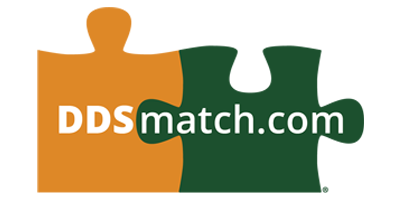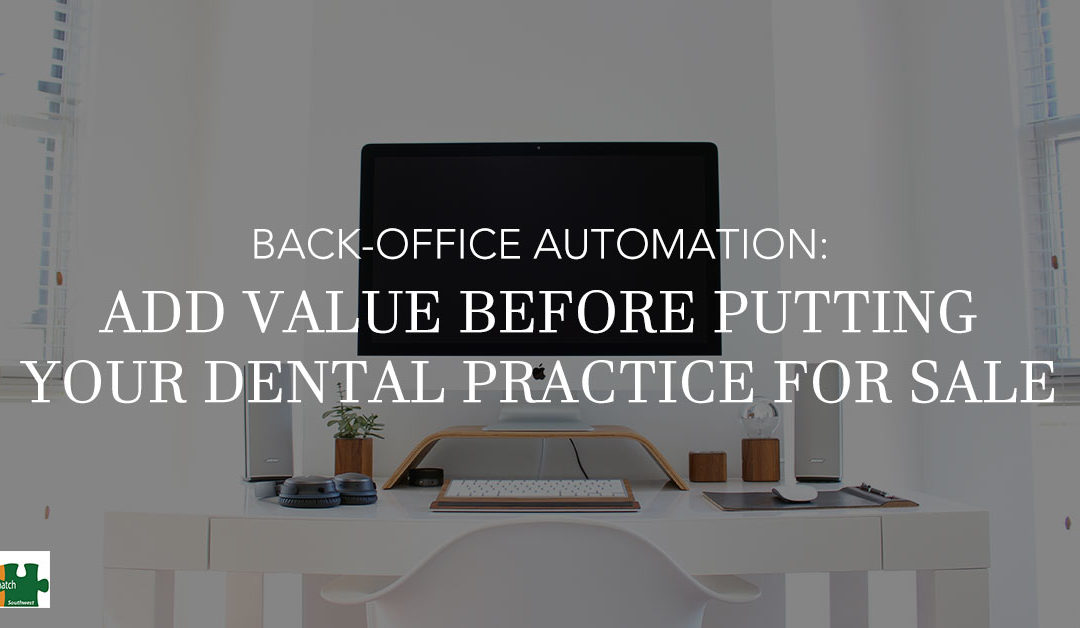Any long-time reader of our posts knows that it’s important to looks for ways to add value to your practice, but not all ways of doing so are equal. The best ways to add value are not always the most obvious. Especially when done right before you put your dental practice for sale, buying new equipment and furniture, or upgrading your technology, might make your office snazzy, but it probably won’t increase your value as much as you may think. In fact, sometimes you can even take a loss on expensive upgrades. This is because a buying dentist wants to make the office their own—with their own choices about decor and equipment.
Better ways of boosting value are in the intangibles: your brand and your business practices. This is because those areas are where most of the value of your practice lies. No one buys a dental practice because it has digital imaging technology. If a buying dentist wants that, they can get it for themselves. Buyers will look at your practice if you have a steady, solid patient base, resulting in steady, solid collections, and low overhead. These areas are where you want to build value.
Invest Wisely: Technology that Saves Money, Not Costs Money
One great—but definitely unsexy—way way to increase the value in your practice is to reduce your billing costs through software automation. When you look at practice valuation reports, you can see that a simple, smooth process for collections is a big factor. Collections take time, and in running a small business, time is money, as the cliche says. The more time your staff takes to work on collections means higher costs in the form of wages and other administrative costs.
Therefore, investing in software or other technology that enables your staff to reduce their time and work with time-of-service collections, pretreatment estimates, and claims can be an asset for your office. When you put your dental practice for sale, if this is positioned properly, buyers will see that your office practices are efficiently organized to facilitate collections.
One thing to be careful about, though, are the HIPAA standards. You first need to understand what you can do under HIPAA. You are allowed to automate claims submissions, eligibility and benefit verifications, claims payment, and remittance advice. The automation of claims submissions and eligibility and benefit verification is fairly common practice. As of 2016, about 74% of dental offices in the U.S. had automated their claims submissions, and about 58% had automated eligibility and benefit verification.
But that is only half of what you can do, and as of 2016, virtually no dental offices had automated the other process. Only 8% of dental practices had automated claim payments. And none had automated the remittance advice. This is surprising, because if the dental and medical industry would fully automate their back-office processes, it could result in nearly $2 billion in revenue annually. That’s a lot of money to go around.
How to Automate Claims Payments and Electronic Remittance Advice (ERA)
To get your piece of that pie, and boost your dental practice value, all you need to do is follow these four simple steps to get your back-office processes fully automated.
- Contact the dental insurers you work with and enroll in the health-care electronic funds transfer (EFT) standard via ACH for claims payments and ERA (ACH stands for “automated clearing house” and is an electronic funds-transfer system run by the National Automated Clearing House Association (NACHA) to facilitate payment services such as payroll, direct deposit, tax refunds and payments, consumer bills and many other services). Receive payments directly in your bank account.
- Decide how you’d like to receive ERA.
- Make sure that your practice management software will automatically reconcile EFT and ERA.
- Ask your bank for the delivery of remittance information.
When you take advantage of the full spectrum of back-office automation allowed by HIPAA, you will reduce the time your staff spends of collections and the administrative costs involved. You thereby reduce your overhead, making your dental practice more profitable, saving as much as $36,000 per year. That’s money in your pocket that you can choose to reinvest in your practice or put away for retirement.
Also, by maximizing the automation allowed by HIPPA and using compatible practice management software that allows for automatic reconciliation and posting of receivables, your practice will show the following benefits:
- Improved cash flow as funds are directly deposited into your bank account
- Get paid faster because many dental insurers will pay claims that accept health-care EFT before paper claims that require a check to be issued.
- Reduced instances of missing payments or fraud—direct deposits don’t get stolen or lost in the mail.
- Keep your patient account records up to date faster, easier, and with greater accuracy, allowing you to make sure your billing is accurate and alleviating the risk of bad debt by facilitating collections closer to the time of service.
- The ability to process more payments with less staff or fewer staff hours; the benefit here is twofold: you reduce costs and the less time you and your staff spends on book keeping is more time spent with patients.
Although we described business practices as an intangible above, the benefit of automating your back-office processes can be easily quantifiable in terms of lowered overhead costs and increased profit margins. Those numbers can be provided to buyers with the explanation of how you got there. When you want to put up your dental practice for sale, having these processes in place—with demonstrable savings—will make your more attractive to buyers. This is especially the case as the dental industry continues to move away from sole practitioners toward group practices, as automated systems are easier to fold into an existing corporate structure that the buyer already has in place.
DDSmatch Southwest Helps Add Value Before You Put Your Dental Practice for Sale
If you are considering transitioning your practice in the next five years, DDSmatch Southwest will provide you with a free, no-obligation Practice Transition Assessment. As part of that assessment, DDSmatch Southwest will help identify potential practice investments to help you increase the value of your practice before you sell. Contact DDSmatch Southwest today and request your free consultation.

